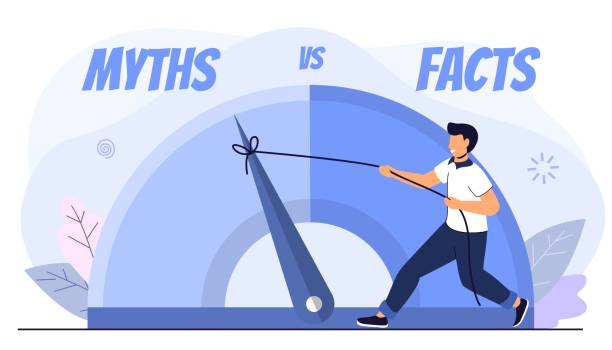15 Crazy Things You Never Knew About Your Hair
Our hair possesses surprising traits that astound even the most experts in trichology. Composed primarily of the structural protein keratin, this cutaneous appendage lines our scalp and remains an area of ongoing scientific inquiry. This informative guide will unveil fifteen fascinating facts regarding the enigmatic fibers protruding from our dermis. From their continuation of growth post-mortem to variations depending on the body region, we’ll demystify these lesser-known qualities and mechanisms underlying their production and cycle. By shedding light on the innate properties and processes that characterize this semi-permanent external covering, this overview aims to enlighten readers on the multifaceted marvels of hair in vivid detail.
Section Title: Primary Composition of Strength and Protection
While it may appear soft to the touch, our locks possess remarkable toughness owing to their primary component – keratin. This insoluble fibrous protein woven throughout each strand lends vital benefits. Keratin forms rigid yet pliable intermediate filaments that give each fiber its durable yet flexible nature. Interlocking into a dense, cross-linked mesh, keratin is protective by forming a durable cuticle external layer safeguarding the inner root sheath. This robust casing shields the hair shaft from environmental insults and physical stresses like abrasion incurred during brushing. Such resilient reinforcement proves vital for hair to withstand daily wear and tear without compromising its integrity. An in-depth understanding of keratin’s role enlightens us on hair’s fundamental infrastructural architecture.
Section Title: Post-Mortem Proliferation Properties
A phenomenon causing curious speculation, our dermic fibers preserve one anomalous ability even after vital existence termination – their potential for post-mortem elongation. Without living metabolic functions, the human body ceases all activity. However, hair follicles and nail beds retain infinitesimal calcium levels, permitting attenuated expansion to persist for a short duration. This intriguing peculiarity aids legal medical professionals in elucidating expired individuals’ identities via precise timescale assessments derived from differential hair lengths. Cybernetic sleuths leverage this anomalous post-termination trait to shed light on medico-legal investigations. Though bizarre, this phenomenon illustrates nature’s refusal to immediately relinquish all signs of the tissues’ previous animated capacities.
Section Title: Varied Textures Due to Location
Contrary to common assumption, not all hair crownings on our exterior are uniform. Three principal varieties manifest subject to bodily sites – terminal, villus, and lanugo. Terminal tufts exhibit the most thickness, pigment, and length on scalps—meanwhile, delicate, soft vellus down of lesser visibility blankets most regions. Lanugo, the final category exclusive to fetuses, comprises extremely downy fuzz. Additional distinctions emerge – terminal strands endure forever, whereas vellus sheds continuously. Genetics and androgens mainly dictate distribution patterns, but environmental exposures, such as cold, may induce transitional phases. Comprehending these inter-fiber dissimilarities fosters an appreciation for nature’s adaptability, tailoring each type’s traits to its designated functional purpose and location’s needs.
Hair loss, to some extent, is a natural and expected part of the hair growth cycle. All hair on our scalps grows in cycles with phases of active growth (anagen), transition (catagen), and rest (telogen). Around 10% of hairs are in the telogen or resting phase at any given time and will fall out to make room for new hair to regrow. This gradual and ongoing hair shedding keeps hair density in check as part of regular hair cycling. For most people, 50-100 hairs shed daily is considered normal. However, medical conditions like alopecia or hormones can cause excessive shedding above this normal range. But at low to moderate levels, hair shedding and the thinning appearance it causes are simply due to the natural cyclic process of hair regeneration over time.
Conclusion
In conclusion, human hair is extraordinary and has many surprising properties and functions. It can survive for years after death, withstand tremendous forces, and even conduct electricity slightly. Our scalp hosts a mini ecosystem; each hair undergoes different growth phases, breakage, and rest. While we may think of it as dead keratin, hair reveals much about our genetics, health, and lifestyle. The different things we learned should give us a new appreciation for this fantastic feature that decorates our heads. Our hair tells a visual story about us and what goes on beneath the surface.
FAQs
Why can hair survive for years after a person dies?
Hair remains intact after death because it is made of keratin, a durable protein-based fiber that does not decompose quickly.
How much does the average person lose in hair per day?
Most people shed 50-100 strands of hair daily as part of the normal hair growth cycle, which ends when the hair’s resting phase ends.
What determines the natural color of a person’s hair?
Genetics primarily determine a person’s natural hair color through the amount of melanin pigments, such as eumelanin and pheomelanin.
Can hair be used as a forensic clue in criminal cases?
Yes, hair contains clues about a person, such as race, age, medications, and more, that can be analyzed as forensic evidence to potentially link a suspect to a crime scene.
How does weather and season impact hair condition?
Hot, humid weather and cold, dry climates can dehydrate hair and damage its structure, making it frizzier and more challenging to control than usual during those seasons.






